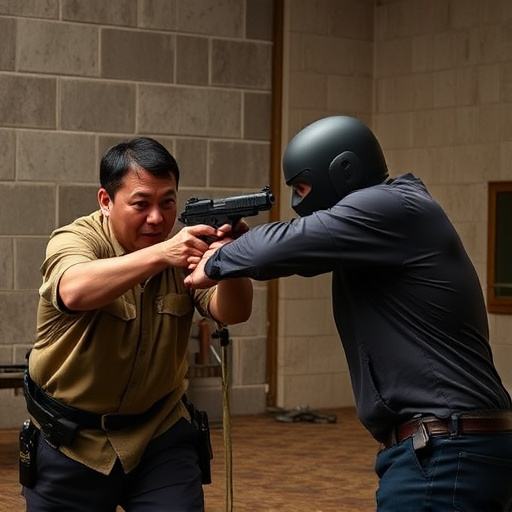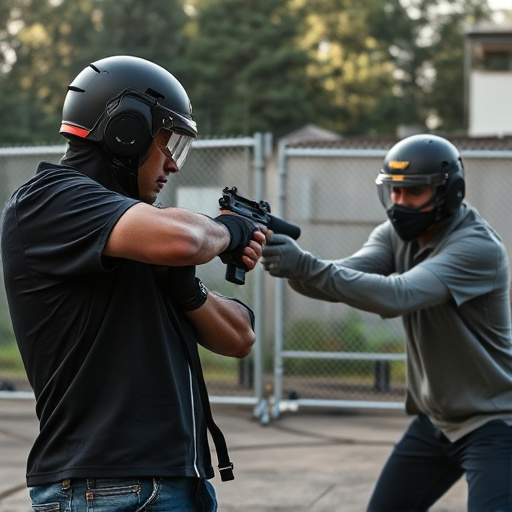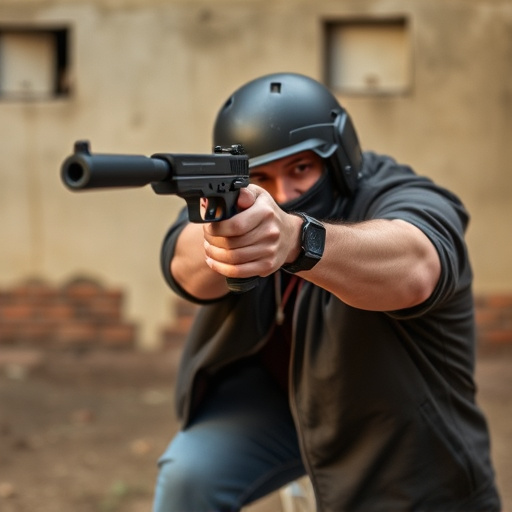Understanding muscle incapacitation from stun guns is crucial for self-defense. Proper charging techniques, following manufacturer guidelines, maximize impact. Factors like regular charging, high-quality devices, size, weight, user training and body mechanics influence effectiveness. Correct hand placement on nerve centers enhances impact while weather affects battery life. Legal considerations and safe handling practices are paramount. Regular maintenance, including battery health checks and cleaning contact points, ensures optimal performance during critical situations. Proper storage protects against extreme temperatures and moisture, maximizing reliability. Learn how to charge stun guns properly for enhanced self-defense and security.
“Uncover the enigmatic duration of muscle incapacitation caused by stun guns, a crucial aspect for self-defense enthusiasts and law enforcement alike. This comprehensive guide explores the science behind stun gun effectiveness, delving into factors that impact their performance. From understanding the stun mechanism to mastering the art of proper charging—as illustrated in our step-by-step guide—we demystify these tools. Additionally, we navigate legal boundaries and safety precautions, offering insights into real-world scenarios and response times, ensuring you’re prepared for every situation.”
- Understanding Muscle Incapacitation from Stun Guns
- Factors Affecting Stun Gun Effectiveness
- How to Charge a Stun Gun Properly: A Step-by-Step Guide
- Legal Considerations and Safety Precautions
- Real-World Scenarios and Response Times
Understanding Muscle Incapacitation from Stun Guns

Understanding muscle incapacitation from stun guns is crucial, especially for those looking to utilize this self-defense tool effectively. When a stun gun deploys its electrical charge, it disrupts the muscle control in the target’s body by interfering with nerve signals. This disruption results in temporary muscle incapacitation, allowing the user time to escape or defend themselves further. The duration of this effect varies based on factors such as the stun gun’s power output and the specific muscles targeted.
Proper use and charging techniques play a significant role in maximizing the impact. Learning how to charge stun guns properly ensures they are ready when needed. Users should follow manufacturer guidelines for charging, which often involves using a dedicated charger and adhering to specified time limits. This practice guarantees the device delivers its full potential, providing users with the best chance to disable an assailant quickly, thereby extending their window of opportunity to get to safety.
Factors Affecting Stun Gun Effectiveness

The effectiveness of a stun gun depends on various factors, and understanding these is crucial for users to ensure optimal performance when needing to defend themselves. One key aspect is the quality and charging of the device. Stun guns should be charged regularly according to the manufacturer’s instructions—proper charging ensures the device has enough stored energy to deliver a powerful shock. Users should also invest in high-quality stun guns, as low-end models may not provide the intended level of incapacitation.
Additionally, factors like the size and weight of the stun gun, the user’s training and body mechanics, and environmental conditions can impact its performance. Proper hand placement and target area are essential to maximize the effect—aiming for nerve centers on the body can enhance the stun’s duration and intensity. Meanwhile, weather conditions such as humidity or extreme temperatures might affect battery life and the device’s overall functionality, requiring users to be prepared with spare batteries or alternative self-defense tools.
How to Charge a Stun Gun Properly: A Step-by-Step Guide

To ensure your stun gun is effective when needed, proper charging is paramount. Begin by examining the device for any signs of damage or wear, replacing batteries or components as necessary. Next, locate the charging port—usually a small opening with a specific shape or symbol indicating its purpose. Insert the provided charging cable carefully, aligning the connectors precisely to prevent misalignment.
Follow the manufacturer’s instructions regarding charging time, typically ranging from 2-4 hours. Avoid overcharging by removing the device once fully charged, and store it in a cool, dry place. Regular maintenance includes periodic cleaning of contact points and checking battery health to ensure optimal performance when you need it most.
Legal Considerations and Safety Precautions

Stun guns, also known as electroshock weapons, have varying legal statuses across different countries and regions. It’s crucial to understand the local laws and regulations regarding their possession and use before considering one for personal safety. Owning and operating a stun gun improperly can lead to severe legal consequences.
Safety precautions are paramount when handling any weapon, especially stun guns. Always ensure you or your designated target is properly secured and that there’s minimal risk of accidental discharge. Regular maintenance, including learning how to charge a stun gun properly, is essential to keep the device in optimal working condition. This includes keeping it away from extreme temperatures, moisture, and physical damage to prevent malfunction or reduced effectiveness during critical situations.
Real-World Scenarios and Response Times

In real-world scenarios, understanding the muscle incapacitation duration from stun guns is crucial for self-defense and law enforcement applications. The response time and effectiveness of a stun gun depend on various factors, including the device’s quality, proper usage, and individual physiological differences. A well-charged stun gun, used according to the manufacturer’s instructions, can temporarily incapacitate a target, providing a vital window for escape or backup intervention.
To ensure optimal performance, it’s essential to learn how to charge a stun gun properly. This involves regular maintenance, such as inspecting battery health and ensuring contact points are clean. Proper handling and storage also play significant roles in maximizing the device’s lifespan and reliability. By understanding these aspects, users can rely on their stun guns during critical moments, leveraging the technology for safety and security.
In understanding muscle incapacitation from stun guns, it’s clear that several factors, including proper charging techniques as outlined in this guide, significantly impact their effectiveness. By following best practices for how to charge a stun gun properly, users can ensure these devices are ready when needed. Additionally, legal considerations and safety precautions must be prioritized to maintain public safety and comply with regulations. Real-world scenarios highlight the importance of understanding response times, emphasizing the need for proper training and preparation in managing situations involving stun guns effectively.
